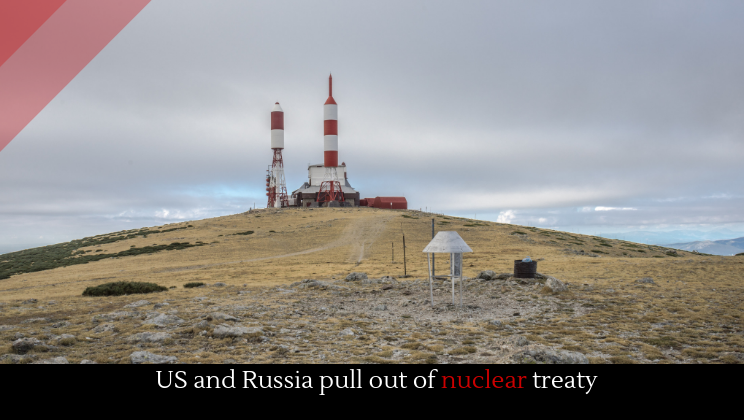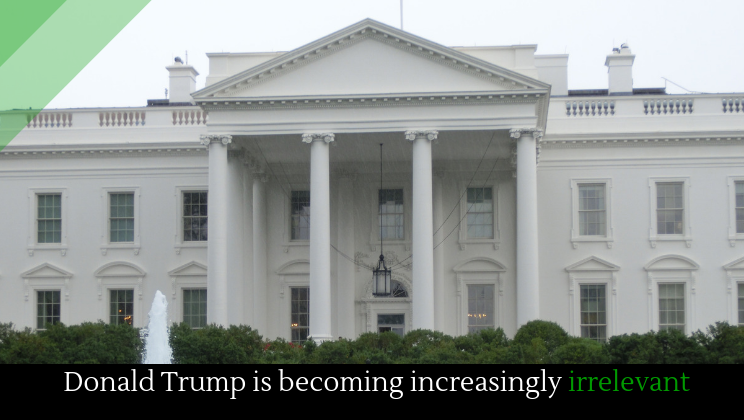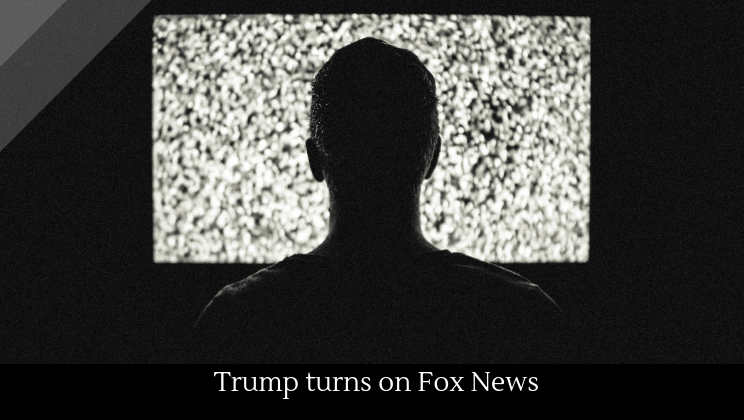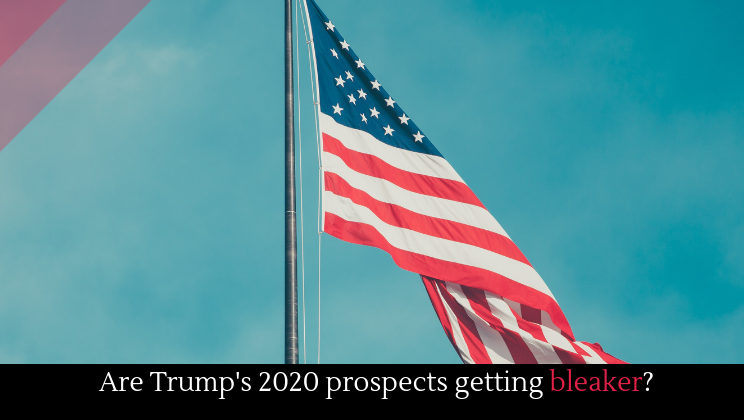Author: Josh Taylor
Are science and religion opposites?
Posted by Josh Taylor / February 4, 2019The New York Times just published an opinion piece called “What Science Can Learn From Religion.” It’s a nice piece. It opens by acknowledging the divide between science and religion:
Science and religion seem to be getting ever more tribal in their mutual recriminations, at least among hard-line advocates. While fundamentalist faiths cast science as a misguided or even malicious source of information, polemicizing scientists argue that religion isn’t just wrong or meaningless but also dangerous.
The author then places himself in the debate. He’s a psychologist, and he asserts that the “scientific method provides the best tools with which to unlock the secrets of human nature.” He has used the scientific method to test religious postulations with his clients. Sometimes, he says, religion is helpful and other times it isn’t. Helpful things include meditation and other rituals, which have various benefits for humans. The author concludes science and religion can help each other. Cool.
But there’s a glaring problem with this opinion piece: it assumes that there is an inherent separation between science and religion. The thing is, there is no inherent separation between science and religion! An excellent historian of science, Jon H. Roberts, has done a lot of work deconstructing the myth of the separation between science and religion. In one article, he called it “The Idea that Wouldn’t Die.” In that article, he describes the long history of science’s connection to religion, not separation from it. But he does describe when the idea that the two were somehow opposite ends of a spectrum or separate spheres of reality.
That raises a new question: what do we do with the historical fact that science and religion have not been fundamentally opposed and in reality are connected, but the simultaneous knowledge many people (if not most people) believe that the separation is real and that science and religion are incompatible?
While it may be impossible to convince people that science and religion don’t have to be opposed, Jordan Peterson is doing a decent job of convincing skeptics that religion and science are, in fact, compatible. By combining evolutionary biology with an impressive knowledge of myth, Peterson weaves together a worldview that makes sense to modern people. Part science, part religion, it helps people make sense of the world.
For the more intellectually adventurous, it’s worth wondering whether the separation of religion and science is a false dichotomy. If you define religion as the belief in the supernatural, then of course the two things are going to conflict. But that’s a childish definition of religion, and it lacks any sophistication. If we define religion instead as a comprehensive means of making sense of the world, then the question becomes why wouldn’t science and religion be compatible? Further, if we remember that science is not an ideology––that is, not a method of understanding all aspects of life through a single lens––then we remember that science provides only a certain kind of truth, and we also remember that there are multiple kinds of truths. We’ll dig into this more in a later post.
More about religion.
Read MoreIs Donald Trump really a racist?
Posted by Josh Taylor / February 4, 2019According to those on the left side of the political spectrum, Donald Trump is a flaming racist, and the only thing that could make his racism more obvious would be a Ku Klux Klan hood. Those on the right end of the political spectrum, however, thing that charges of racism are overblown, unproven, and blatantly partisan attempts at discrediting Trump. In this post, we’ll explore Trump’s tangled, often confusing history with race and racial tensions, and we’ll try to do so without partisan bias.
Other media outlets have already done this. Snopes, for example, tackled memes that placed Trump alongside black people and claimed that he had never been accused of racism before running for president.
Snopes called the meme false, citing several instances involving race. For example, in 1973 the Trump Management Corporation was sued for violating the Fair Housing Act. He also took heat for his 1989 ad about the Central Park Five in the New York Times. In 1991, a former employee accused Trump of using racial slurs. In 1993, Trump said ““They don’t look like Indians to me and they don’t look like Indians to Indians,” in a testimony before the House Native American Affairs Subcommittee. In all of these cases––and more––Trump was accused of racism.
PBS has also listed times that Trump was involved in tense racial issues. Many were the same as the Snopes article, particularly the Central Park Five instance. Others were new, such as tweets Trump wrote about Mexico sending “criminals” to the United States or mocking a vaguely Asian accent. The PBS list is exhaustive, to say the least. Their point is this: “While Trump’s actions have landed on both sides of racial currents, his public record depicts a man who most often moves in one direction: overlooking racial sensitivity and concerns in the name of fighting ‘political correctness.'”
Other outlets (particularly left-leaning ones) have blatantly called Trump racist––or something close to it. The Dayton Daily News said that Trump didn’t mind sounding like a racist, even if he wasn’t one. A potential Democratic presidential candidate, Senator Sherrod Brown, recently said that Trump was definitively racist.
The problem with all of these articles is simple: they never define race or racism. Race and racism are concepts that seem obvious, but the problem is that people aren’t all necessarily in agreement about what they mean. Let’s use this definition for race: the notion that groups of people that look alike share non-biological characteristics. Then let’s define racism as: the assumption that “races” exist, and that some races are inferior to others.
So based on that definition, is Trump racist? Well, it seems that he assumes that groups of people who look similar have similar characteristics––see his comment about Native Americans––but whether he believes that those traits are passed through bloodlines is hard to say. It’s hard to say that unless he explicitly says that sort of thing, which he doesn’t. It’s also hard to say with certainty that he believes some races are superior to other, although his unwillingness to condemn white supremacists in Charleston raised some eyebrows.
So is he a racist? Who knows. Is he a jerk? Definitely. Let’s be precise in our language.
More news.
Read MoreUS and Russia pull out of nuclear treaty
Posted by Josh Taylor / February 3, 2019The United States and Russia have both pulled out the I.N. F. Treaty, signaling a potential resumption of the Cold War era arms race.
The I.N.F. was the result of the nuclear rivalry between the new nations. For an excellent documentary about the development of the nuclear bomb and the subsequent race to create the biggest, most destructive bombs watch Trinity and Beyond: The Atomic Bomb Movie. After over thirty years of atomic bomb development, tensions between the two nations were at a breaking point––this was twenty-five years after the Cuban Missile Crisis, after all.
Another crisis erupted in the mid-1980s when the Soviets moved an SS-20 missile in Europe, which was capable of carrying three nuclear warheads. The United States, in turn, stationed its own nuclear weapons in Europe.
This was a dangerous development for the Soviets. United States missiles in Europe could destroy Soviet leadership before they could order a retaliatory strike. The Soviets, as a result, developed a “dead hand trigger”––if computers sensed a combination of radiation and seismic activity, they would unleash their nuclear arsenal.
Signed in 1987, the treaty prohibited land-based missiles with ranges between 311 miles and 3,420 miles. The treaty stood until the 2014 Ukraine crisis. The U.S. accused Russia of violating the treaty, and President Barack Obama personally wrote to Putin about the alleged violation. Last year, Putin displayed the missile that the Americans believed violated the treaty. The Trump administration said the display did not ease their concerns about the missile’s violation of the treaty.
As a result of the Russian’s continued alleged violations of the I.N.F. Treaty, the United States has pulled out of it. The Russians followed suit. Putin announced that he is still willing to negotiate, but he was speaking out of both sides of his mouth. He simultaneously announced that Russia would start developing new missiles. He also said, confusingly, that Russia would not get involved in another arms race. Instead, he said that their own research was meant to parallel United States research, and that any funding for Russian missiles would come from the existing defense budget.
Beijing has called on both sides to be reasonable, but one reason that the United States has pulled out of the I.N.F. treaty is China.
These developments put the already beleaguered Trump administration in a precarious position. The administration has made a series of foreign police blunders in the past weeks, including premature withdrawal from Syria. This new, immensely complicated situation with Russia is a proverbial minefield of difficulty for the administration. If they stray too far in one direction, they risk igniting and arms race with Russia. If the administration isn’t tough enough, by contrast, they risk empowering Putin to continue his saber-rattling and Hitler-like aggression. And the situation is made even more complicated China’s entry into the global arena. China is a powerful third party, and a global superpower that could, if it opted to side with Russia or the U.S. could sway the shape of the global struggle. Or, if China is smart and Trump is not (uh oh…), China can play Russia and the U.S. against each other and simply take the lead in global politics.
Read MoreStudy reveals that diverse groups are not as different as we think
Posted by Josh Taylor / February 2, 2019If you watch the news, you might think that the world is more divided than ever before. We see news articles and opinion pieces calling Trump a fascist or suggesting that the entire GOP is somehow corrupted by corruption, evil, and fascism. The left, meanwhile, is portrayed as full of radical socialists and baby-killers.
But a recent study has revealed that even diverse groups around the world have more in common than we think. Another study revealed that only 33% of Americans are at the polar opposites of the political spectrum, the other 67% represent the exhausted majority. What accounts for the difference between perception and reality?
Many people assume that groups of people are inherently different from other groups, thanks to our tendency towards tribalism. That makes sense––humans do like to group together for safety. It’s something we’ve done since caveman days. But that doesn’t account for the fact that we aren’t actually as different as we assume, or at least not entirely. Tribalism may be one of the root causes, but maybe other things exacerbate our tribalistic tendencies.
One of the things that make our tribalistic tendencies worse is the media. News organizations––especially cable news––exist not to keep us informed, but to make money. They capitalism on tribalism by catering to in-groups and touting fear of out-groups. That’s why nearly 70% of Americans report “news fatigue.” It’s exhausting to be afraid and hateful all the time. But the opposite––feeling good and connected to other people––isn’t as popular.
Another problem is social media. Social media users naturally find their tribe, and that creates a social media echo chamber. It’s hard to tell if you’re in an echo chamber because we naturally fall into them––who wants to read people who disagree with us? Out-group bashing occurs frequently on social media, since hatred of an enemy is a powerful force that unites people.
But there’s something else that causes us to tribe up and to assume that we’re different from others. It’s something that exists deep within our brains, and it’s hard to notice. Once you start noticing it, however, you can’t stop. Essentially, we inhabit a chaotic world. We’re surrounding by things that are dangerous, and things that we don’t understand. To keep ourselves from going mad, we try to organize and categorize the world around us. The world then becomes split into two things: chaos and order.
All sorts of things fall into the chaos category, but the most significant for us in modern times is other people. If you don’t know how this can be the case, just watch the first few seasons of The Walking Dead. That perfectly dramatizes the fear we feel of people we don’t know. The first season of Lost is another good example.
The point is this: we naturally need to categorize people into “us” and “them,” chaos and order. The media does this for us, but we don’t need much help. What we forget as we do this is that other people are just that––people. As a result, there’s more that unites people than divides them. When we get stuck in echo chambers, or watch too much Fox News or CNN, we forget that.
More news.
Read MoreThe conversation about abortion is toxic
Posted by Josh Taylor / February 1, 2019The national conversation about abortion is toxic, and it has been for some time. The subject has come to the forefront of the national consciousness recently because of several laws enacted throughout the nation. Louisiana recently enacted a law that would require doctors performing abortions to have privileges at a hospital within a thirty-mile radius of anywhere an abortion is performed. This would limit access to abortion. The Center for Reproductive Rights filed a motion with the Supreme Court and penned on opinion piece for the New York Times.
The New York Times editorial board recently published a piece entitled, “Roe v. Wade Is at Risk. Here’s How to Prepare.” The piece finishes, “The anti-abortion movement understands the high stakes of this moment. Those who support reproductive rights must as well.”
New York and Virginia have both put laws on record to ensure abortion rights are maintained. The former prevents doctors from being labeled criminals, the latter allows abortion up until the moment of birth. Pro-lifers have responded in much the same way that their opponents have to the law in Louisiana. Some have gone so far as to call these laws part of an “infanticide craze.”
The BBC speculates that a nation fight over abortion looms. They’re right––abortion has become a political issue, something to fight over in the same way that we fight over taxes.
But abortion isn’t a tax. It’s about two human lives that will be forever changed. Pro-life and pro-choice partisans are not fighting about the actual abortion, they’re fighting over the fight. Starting from first principles, then, what is abortion?
First, abortion is the removal of a fetus from a uterus.
That’s about as far as many people can go before they begin arguing over whether a fetus is a life. If a fetus is a life, then abortion is “murder.” But is that a useful question? Perhaps a more useful question is this: is removing a fetus from a uterus helpful or harmful for, 1) the mother, 2) the fetus, 3) society in general?
From there, we should ask, what constitutes something being “helpful” and “harmful?” Let’s take the most conservative approach to helpful: helpful means benefitting the physical health or emotional health (insofar as it impacts the physical health). Hurtful means the opposite: it harms the physical health (or the emotional health, insofar as it impacts the physical health).
If you think about abortion that way, it’s becomes clear that both parties are misguided in their demands. That’s because, again, they’re fighting over their fight, and they’re fighting to win. Why is it so clear that both parties are wrong? Because these principles allow for abortion (which pro-lifers hate), but only in very limited circumstances (which pro-choicers hate). It also disagrees with the fiercest pro-choicers who suggest that emotional stress is a sufficient reason for an abortion by counterbalancing that against the impact on the fetus and the society.
This is how this author thinks of abortion. Other people think of abortion differently. That’s where we need to start in this looming national debate. We need to agree that we don’t have to agree and we don’t have to adhere to the farthest extreme of pro-life or pro-choice.
More news.
Read MoreWhy our addiction to social media is a religious problem
Posted by Josh Taylor / January 31, 2019Social media is a religious problem––and I don’t mean that in the, “Crazy Uncle Tom is posting his wacky anti-evolution memes again” way. But I also don’t mean it in the “we all need more Jesus and less Facebook way.” Instead, I suggest that thinking about social media as a religious problem is the best way to grapple with its negative impact on society.
So what is a religious problem? For that matter, what is religion? In this case, I’m going to use the definition of religion articulated by Emile Durkheim, a founder of sociology and the field of religious studies. According to the Durkheim, religion comes from human society––indeed, religion is human society. In other words, all of the ways that society shapes us and guides our lives, that’s religion, according to Durkheim.
How does that help us understand our relationship with social media? Well, Durkheim says that social force is powerful, important, and authoritative––in other words, religious. Social media, and particularly Facebook, is rewiring our society. If our society changes, our “religion” changes. Again, religion doesn’t mean Hindu or Christian or Buddhist. Rather, it means the social forces that impact us as a civilization. What do those forces look like?
In short, these religious/social forces are the ways that we make sense of an immensely complicated social world. They’re categories that we use to organize the chaos around us into order, things like gender, race, and socioeconomic class. These forces help us determine who’s “us”––our allies, our friends, and our protectors––and who’s “them”––our enemies, our rivals, and our predators.
Facebook, Tumblr, Twitter, etc., are all short-circuiting those categories. That may not be a bad thing. Maybe some categories need to be busted wide open. The #MeToo movement, for example, exposed some pretty bad trappings of the gender binary (and this isn’t even to mention the movement trying to eliminate the gender binary altogether), and it taught us that we need to think about some of those categories. But is social media the best way to affect change? It’s certainly a way, but is it the best way? It’s too soon to tell the impact of #MeToo, but it’s fairly clear that it’s a mixed bag, whether because the #MeToo movement swung too far and scared people off or because the countermovement is going to cause serious problems.
A recent study found that quitting Facebook had some pretty immediate benefits to your life, one of which was decreased partisan fever. That’s because Facebook short-circuits another aspect of living in society––it creates an artificially homogenous community with absolutely no checks or balances. Communities, according to Durkheim, have social––that is, religious––force. Communities want to understand and interact with that invisible, anonymous force and so they give it a concrete body. That’s called a totem. The totem’s meaning is both independent of and dependent on the society that produces it. Donald Trump is such a totem.
Social media changes society, and as a result it changes the very way we interact with the world and the people around us. In its broadest sense, religion is a way of interacting with the world and the people around us. Social media is a religious problem.
More about religion.
Read MoreDonald Trump is becoming increasingly irrelevant
Posted by Josh Taylor / January 29, 2019If aliens were to watch United States news channels and read our newspapers, they would assume that the president is the single most important person in the nation. They might even assume that the president is the sole ruler of this country. If they paid very close attention, they could perhaps articulate some separation of powers, but still it would seem as though the buck stopped with the president.
They’d be right, in some ways. Since FDR, we have invested the president with increasing power and authority, turning him into a kind of totem for our civil religion, a steersman for the ship of state, a shaper of legislature, a de facto spokesperson for our political parties, and a rallying point for our country in times of threat––which seems to be all the time since FDR.
It’s important to realize, however, that this was not always the case. Once upon a time, Congress was obviously the most powerful branch of government, and the Speaker of the House was among the most powerful people in the nation. Nancy Pelosi has just reminded us of that by rallying congressional Democrats to thwart an agenda spearheaded by President Donald Trump.
Trump has obviously withdrawn a bit from the limelight since his defeat, as has his administration. Note this Tweet:
Until very recently, Sanders hadn’t given a press briefing for over forty days. Even when she broke her long silence, most media outlets didn’t cover the briefing:
Rather than run the country, Trump has turned his attention to giving White House tours. You might want to read that sentence again. He’s giving tours of the White House––in between the eight or so hours of TV he watches. During these tours, he allegedly points out a part of the White House with particularly lurid history: “I’m told this is where Bill and Monica . . .” He doesn’t say more, but this statement apparently has led to long, crude conversations.
The presidency is an intentionally weakened position. The Framers designed it that way to present a tyranny, and American tradition has kept it that way. That’s why the president must be invited to give the State of the Union, and that’s what was at the heart of the final days of the shutdown showdown when Pelosi refused to invite Trump to give his speech. She said she would do so when the shutdown was over. True to her word, now that the shutdown is over she has invited him to deliver the State of the Union on February 5.
It is a cowed Trump that should be entering the House chambers that day. But more importantly, it should be a grateful––and wiser––nation that tunes in. The shutdown was a damned mess, but it proves that the government is working exactly how it should. Trump tried to flex the muscles of the office of president––muscles that have been artificially inflated since FDR––and Congress did exactly what it was designed to: prevented the executive branch from becoming too powerful.
More politics.
Read MoreThe true cost of the government shutdown
Posted by Josh Taylor / January 29, 2019The government shut down over a discrete dollar amount: $5.3 billion. That was the amount that Trump demanded for his border wall, which the Democrats refused. No one is naive enough to think that the shutdown was really about the money––it wasn’t about saving 5.3 billion bucks. Once the estimates of the cost of the shutdown began to outweigh the cost of the wall, that became patently obvious. Rather, the shutdown was about political brinksmanship, ideology, and most of all, winning.
It’s fairly clear by now that in this particular game of chicken, Trump lost and Pelosi won––Trump’s loss was so significant, in fact, that it reverberated all the way through the Republican Party. The cost of the shutdown to Trump is therefore fairly clear: he lost major political clout. It cost him the undivided loyalty of the Republican party. It cost him the support of his base. Time will tell how much more it will cost him––potentially the 2020 election.
As the dust settles, we might speculate about the other costs of this shutdown. The first, and most obvious, is the financial cost. Unfortunately, it’s a staggering $11 billion. That estimates includes not only economic slowdown caused by federal workers’ lack of income (and therefore spending), but also the businesses that those workers patronized, as well as the economic impact of slowed or lost government services. Some of that financial loss can return. But, as Vox points out, up to $3 billion dollars has vanished from the economy, never to return.
The financial burden was felt more by individuals and private businesses. The cost of the shutdown cannot only be measured in money, but also in morale. The thousands of mothers and fathers who were unable to provide for their children, or who lost sleep worrying about how they would do so, suffered as a result of this shutdown.
That suffering radiates outward, and makes us wonder about yet another cost: what did this shutdown mean for our faith in our country? Faith in Trump’s approval rating are down––even about the one thing that his followers supported him on: the economy. News outlets like Bloomberg are beginning to point out that the economy under Trump is actually growing slower than all but one of the presidents in the last forty years. The impact of a nation’s loss of faith in its leader is immeasurable, and we shall only even be able to speculate about it in twenty years or more. It’s nevertheless an important thing to consider.
There are still other costs. Remember how poorly the national parks fared during the shutdown? The damage done during that time is permanent. A former park supervisor has said that Joshua Tree make take three centuries to recover from the off-roading, vandalism, and littering. That means, in 200 years time, Americans (if there still is an America) will visit that park and see traces of the 34-day shutdown. This is the legacy that we have left to our descendants.
This is the tip of the iceberg when it comes to assessing the true costs of the shutdown. If you have other ideas, please leave them in the comments.
More news.
Read More
Trump turns on Fox News
Posted by Josh Taylor / January 28, 2019President Donald Trump loves Fox News. Trump allegedly watches up to eight hours of TV a day, much of it Fox. His obsession with the station is so well known that John Oliver took out ad time during his favorite program, Fox and Friends, to attempt to educate Trump on important issues.
But Trump’s relationship with the news organization may be souring. We recently noted that the media, including Fox News, declared Trump the loser in his showdown over wall funding. Trump was not happy, as this tweet shows:
The Hill adds context,
The comments from Trump come only days after he signed a continuing resolution to temporarily reopen the government following a 35-day shutdown. The funding lapse was triggered after Congress failed to reach an agreement on a new spending bill.
While USA Today recaps Ann Coulter’s criticism of Trump,
“Good news for George Herbert Walker Bush: As of today, he is no longer the biggest wimp ever to serve as President of the United States,” Ann Coulter quipped on Twitter.
Later, Coulter criticized Trump again on “Real Time with Bill Maher” on HBO, telling the show’s host that she expected Trump “to keep a promise he made every day for 18 months.”
More news.
Read MoreHoward Schultz wants to run for president, Dems freak out
Posted by Josh Taylor / January 28, 2019Former Starbucks CEO Howard Schultz recently announced that he was considering an Independent presidential run. By and large, the reaction has not been positive. Democrats, for one, are worried. The New York Times summarizes:
The possibility of Mr. Schultz’s candidacy as an independent has drawn condemnation from Democrats, who said that an independent run would split the vote on Election Day 2020 and hand Mr. Trump a second term.
Even Republicans think it’s a bad idea:
“I think it would be terrible for the Democratic candidate to have a left-of-center, self-funding candidate running to siphon off voters,” said David Kochel, a Republican consultant who worked on the presidential campaigns of Sen. Mitt Romney (R-Utah) and former Florida governor Jeb Bush in Iowa. “I just think it would be a disaster for Democrats.”
The Daily Beast took Twitter’s temperature. The social media site is not positive on Schultz 2020.
Splinter News ran an article simply titled “Fuck No.”
But is he all bad? USA Today points out he has been highly successful in the past.
He took over Starbucks when it sold only coffee beans, not cups – it had 11 stores and fewer than 100 employees at the time – and grew it into a global behemoth that now has close to 30,000 stores in 78 countries. Along the way he adopted an ethos of corporate responsibility, making Starbucks one of the earliest U.S. companies to offer stock options and health insurance even to part-time employees, and more recently partnering with Arizona State University to cover tuition for workers who want to earn their bachelor’s degree online.
Read MoreRepublicans left nursing wounds after the shutdown
Posted by Josh Taylor / January 27, 2019The longest shutdown in the history of the United States has ended––at least for now. As the dust settles and the pollsters do their work, the results of the Trump vs. Pelosi, Republican vs. Democrat boxing match are beginning to come in. And the news doesn’t look good for the Republicans.
According to the Washington Post,
In private, irritated Republican senators lashed out at each other over the 35-day shutdown — with conservative hard-liners and moderates attacking Trump’s strategy and his decision to capitulate by reopening the government without winning a dime for his border wall. Many congressional Republicans say they knew the impasse would not end well for the GOP, but went along with Trump in the name of party unity.
The post, among other publications, report Rep. Peter King’s words:
“I hope we get some common sense out of it,” Rep. Peter T. King (R-N.Y.) said, reflecting on what the Republican Party gained from the shutdown fight. “We lost the election in November and now we’ve lost six weeks to get our strength back, to get our position back.”
Pelosi, meanwhile, comes off looking stronger:
Pelosi (D-Calif.) emerges from the shutdown as a stronger leader of her party — and more popular with the public, by early measures — as Democrats eye aggressive efforts to counter Trump’s agenda through ambitious legislation and tough oversight. That suggests the shutdown might have been a strategic misstep for Trump, in addition to a tactical error.
“He’s used to hand-to hand combat,” said former senator Barbara Boxer (D-Calif.), a longtime Pelosi friend and partner in politics. “With Nancy, it’s hand-to-hand combat with a velvet glove, and he’s not used to it.”
…
“I think he’s finally met his match,” said Assistant Speaker Ben Ray Luján (D-N.M.). “The speaker always presents herself in public and in private with the utmost respect. But she’s firm, and she’s strong, and she understands how to wield that power.”
The BBC, meanwhile, is reporting that most U.S. press outlets are counting the shutdown as a defeat for Trump.
There’s something oddly poetic about this. Nothing has stuck to Trump––he’s like political teflon. He’s done things that would have ended the careers of far more established politicians. The one time he gets to do what he bragged about his expertise in––make a deal––he flubbed it. He did so spectacularly and very, very publicly.
More politics.
Read MoreAre Trump’s 2020 prospects getting bleaker?
Posted by Josh Taylor / January 27, 2019After the longest shutdown in United States history and an increasingly damaging investigation into possible Russian collusion, are Donald Trump’s chances of winning the 2020 presidential nomination declining?
The New York Times thinks so:
The longest government shutdown in history inflicted severe political damage on the president, dragging down his poll numbers even among Republicans and stirring concern among party leaders about his ability to navigate the next two years of divided government. Mr. Trump, close associates acknowledge, appears without a plan for mounting a strong campaign in 2020, or for persuading the majority of Americans who view him negatively to give him another chance.
It’s unsurprising, perhaps, that the Donald doesn’t have a plan. Observers disagree about whether he won or lost the showdown––and that’s a bad thing for Trump, a very bad thing. It means his base is splitting:
In the Politico/Morning Consult poll, Trump’s disapproval increased among evangelicals, non-college-educated voters, and those who voted for Trump in 2016, compared with a poll in early January. Meanwhile, the number who blamed Trump for the shutdown increased (slightly) among all three groups.
In addition to weakening support among his base, the entire Trump administration is also under the shadow of an investigation. The New York Times reveals that Trump and his associates had over one hundred contacts with Russians.
More politics.
Read More










